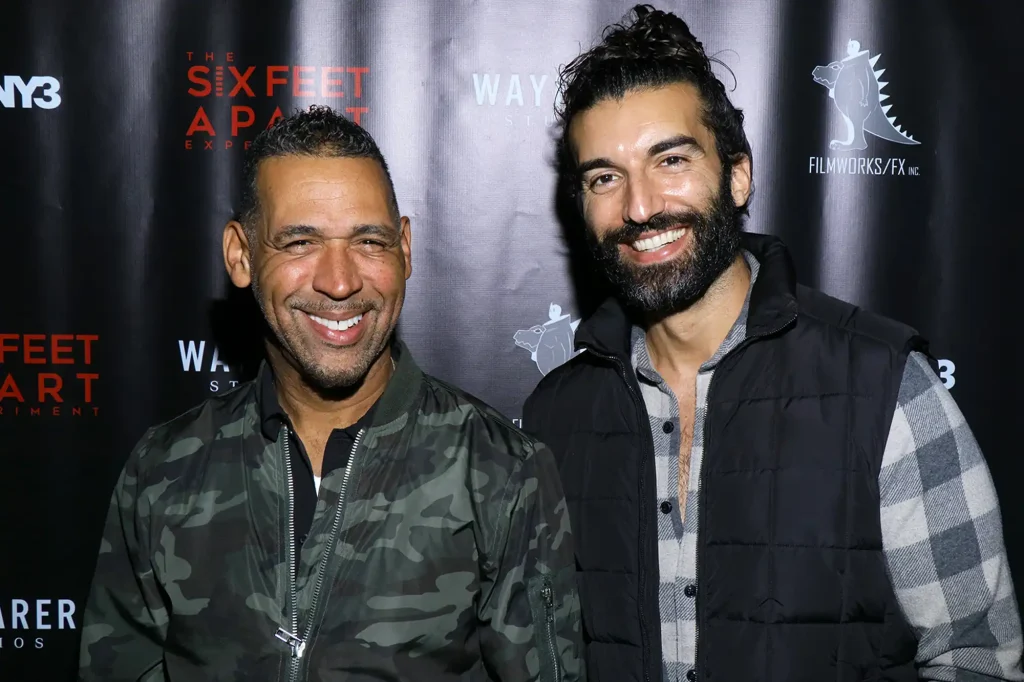Blake Lively Accuses Producer of Withholding Footage of His Wife’s Nude Birth, Seeks Court Sanctions in ‘It Ends With Us’ Lawsuit
In the midst of a legal battle that has captured headlines, actress-producer Blake Lively has taken a bold new step, alleging that film producer Jamey Heath failed to disclose key footage in her ongoing sexual-harassment lawsuit related to the production of It Ends With Us. In a motion filed with the U.S. District Court for the Southern District of New York, Lively’s legal team asked Judge Lewis J. Liman to sanction Heath for allegedly withholding a video that she says was shown to her on set — even though only a partial clip has been produced.

According to court papers obtained by multiple outlets, Lively claims that Heath showed her — and her assistant — a video of his wife giving birth, fully nude and filmed in a home-birth environment, without prior warning or consent. The actress alleges this occurred during filming of the movie, and that the footage was displayed in a work context. Her attorneys say that Heath later produced a three-minute excerpt, but that it does not match the version she and her assistant saw. Lively accuses him of “knowingly and willfully withholding” additional footage.
The stark allegation adds a new dimension to Lively’s broader lawsuit, filed in December 2024 against her co-star and director Justin Baldoni, Heath, and the production company Wayfarer Studios. In that suit, she claimed a hostile work environment on the set, citing unwanted touching, inappropriate entry into trailers, and the showing of nude videos and pornographic content without her consent.
Heath’s legal team has responded that they produced the excerpt in compliance with a court-ordered production but maintain that no further footage exists that meets the order’s definition. Lively’s lawyers disagree, asking the judge to compel full production of the video within three days and to prohibit Heath from testifying or offering evidence about footage he hasn’t disclosed.
The stakes are high. For Lively, this is not only about film-set misconduct — it’s about preservation of evidence, transparency in legal processes, and accountability among decision-makers behind the scenes. For Heath and his legal counsel, it means defending what they claim is full compliance under a narrow reading of the court order. The motion to sanction indicates Lively’s team believes the issue goes beyond simple dispute into the realm of intentional obfuscation.
From a career perspective, Lively’s actions underscore the larger scrutiny Hollywood remains under when it comes to power dynamics and workplace culture. By framing the dispute around a video shown without warning — a deeply personal, highly sensitive event in its own right — Lively is asking: when does private-life content become a weapon in someone else’s hands? And when does exposure become exploitation?

On the production side, the film It Ends With Us has already faced multi-layered controversy: the original novel by Colleen Hoover exploring abusive relationships, the fact that Baldoni directed and co-starred opposite Lively, and the subsequent legal wrangling between the stars and producers. In that light, the new footage allegation threatens to widen the focus from set behavior into behind-the-scenes media, evidence, and legal strategy.
Legal experts say motions to sanction a party for withholding evidence are serious, though not automatic. The court must determine whether the evidence was within the scope of the production order, whether reasonable investigation was performed, and whether the withholding was intentional or negligent. If Judge Liman finds that Heath failed to comply, a range of sanctions could follow — from monetary penalties to restrictions on testimony.
For Lively, the move comes at a time when her work and public profile are under intense spotlight. She remains a major Hollywood figure, but also a producer with control behind the camera. Her lawsuit and the accompanying disclosure about the video raise questions about how actors and crew are treated — not only during principal photography but also in the enforcement of legal safeguards when things go wrong.
On the other side, Heath and Wayfarer find themselves defending not only the specific allegation about the footage, but also the larger culture of the production. Once evidence starts to center on highly personal content — like a birth video shown in a production context — it invites commentary not just on boundaries but on the relationship between private life and workplace professionalism. The defense’s claim that no further footage exists or is required to be produced may face scrutiny if it appears inconsistent with what Lively and her assistant recall.
One key question observers are asking: what is the significance of the video beyond the moment on set? If it is indeed the same footage, shown without consent, it implies a blur of professional environment and private life — and potentially further grounds for the “disturbing, unprofessional behavior” Lively’s lawsuit describes. If it is not, then the litigation may focus instead on whether the disclosure of such a video, whether identical or not, constituted a breach of trust and boundaries on set.
While the motion targets Heath directly, it indirectly underscores Baldoni’s position too. Lively’s suit argues that Baldoni and Heath acted in coordination to create or permit a work environment in which inappropriate materials and conduct were tolerated. The new motion, though aimed at Heath’s disclosure practices, strengthens the narrative that such conduct was systemic, not isolated. Baldoni has denied all allegations and previously countersued Lively and her husband, actor Ryan Reynolds. That countersuit was dismissed in June 2025.
Even before the case reaches trial — scheduled for March 2026 — this motion may already shift public perception. Lively’s legal team is signaling that they will not accept anything short of full transparency. For the film industry, the dispute raises important questions about how sets handle personal media, how evidence is preserved, and how power imbalances are managed when work intersects with private lives.
In court filings, Lively’s lawyers argue that the limited excerpt produced by Heath is insufficient and fails to match what she witnessed; they cite heightened concern because Heath mischaracterized or delayed disclosure of the full footage. If the court orders full disclosure, it might reveal additional context or footage that either supports or complicates Lively’s claims. For Heath, the best outcome may involve a finding of compliance — but if not, the sanctions could weaken his credibility as a witness and producer, and potentially shift the balance of the case.
The outcome of this motion matters not just for the parties involved but for how film productions handle other sensitive materials and respond to allegations of misconduct. It may become a reference point in how production companies implement policies regarding non-consensual viewing of private footage, unannounced media sharing on set, and internal protocols for handling intimate or personal content.
Ultimately, Blake Lively’s motion to sanction Jamey Heath is as much about justice in her own case as it is about holding producers accountable for how boundaries are drawn and enforced in the entertainment industry. The next few months, as the court reviews the motion and sets a schedule for trial, will determine whether the thrust of Lively’s lawsuit gains further footing — and whether the footage at the center of this dispute becomes a pivotal piece of evidence or a tangential distraction.



